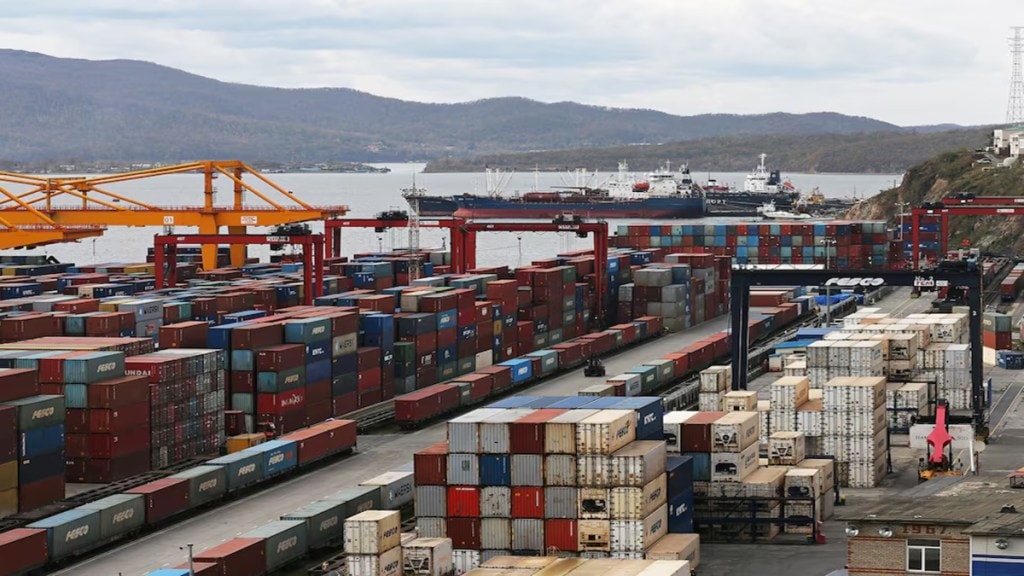Indian companies are increasingly turning to West Asia in search of growth, as trade and tariff barriers in markets such as the US restrict their development. While West Asia has traditionally drawn Indian business interests in energy and infrastructure, it is now emerging as a magnet for tech startups, jewellers and consumer brands. The region is positioning itself as an important economic corridor to the west.
Infrastructure and engineering majors from India are actively prospecting business in Saudi Arabia and the UAE, where governments are building new cities, industrial clusters, and upgrading transport and civic infrastructure. Dubai’s tax-free zones, meanwhile, continue to attract Indian companies, offering financial incentives, regulatory ease and access to global markets. In the first half of calendar year 2025, more than 9,000 Indian firms registered with the Dubai Chamber of Commerce, a number expected to remain high through the second half, according to industry experts.
“As the West Asian region accelerates investment in infrastructure, green energy and knowledge economies, Indian companies are moving from being exporters of goods and services to becoming partners in the Gulf’s transformation agenda across sectors,” PwC’s chief commercial officer Vivek Prasad said.
India’s largest organised jewellery retailer, Titan, is considering setting up a manufacturing unit in West Asia to supply studded jewellery to the US, CEO of the company’s jewellery division Ajoy Chawla told FE, mentioning if the 50% tariff on Indian exports (to the US) remain.
Titan is also expanding its footprint in the region. In July, it acquired a 67% stake in Dubai-based Damas for Rs 2,483 crore. Damas, with 146 stores across the region, will continue catering to Arab consumers, while Tanishq will target the Indian diaspora, Chawla said. The company currently operates 13 Tanishq stores in the region.
Reliance Consumer (RCPL), one of India’s fastest-growing FMCG companies, is also expanding in the Gulf following its partnership with Abu Dhabi-based Agthia Group earlier this year to distribute Campa Cola. The move is part of RCPL’s plan to enter at least 25 countries over the next year, as outlined by parent Reliance Industries at its August AGM.
The trend of becoming a ‘partner’ in West Asia’s diversification journey is reflecting in the order books of Indian engineering and construction majors. In Q1 of FY26, for instance, West Asia’s share in L&T’s order inflows touched 38% from 30% a year ago. The increase in share helped L&T take its total order inflows to Rs 94,453 crore in Q1, which was 33% higher than last year. L&T’s whole-time director and CFO R Shankar Raman had indicated in July that West Asia will remain a key pillar of its international strategy, as momentum there continues to be strong.
The company has identified new business opportunities worth Rs 15 lakh crore in FY26—20% higher than the previous year—driven by strong demand in hydrocarbons and urban infrastructure, according to Motilal Oswal analysts.
Rival Shapoorji Pallonji (SP) Group is also picking up construction projects at a fever pitch in West Asia, with its exposure in the region between group firms Afcons and Shapoorji Pallonji at $1.5-2 billion in areas such as hospitality, real estate and hospitals.
Emails sent to SP Group and Afcons went unanswered as of press time Sunday.
Ancillary sectors such as steel, cement, technology, financial and legal services are also eyeing West Asia, setting up offices and greenfield projects to cash in on the boom, experts said. For instance, the West Asia subsidiary of UltraTech, India’s largest cement maker, in the last two years has consolidated its presence in the region, acquiring a 70% stake in Oman-based Duqm Cement and increasing its shareholding in UAE-based Ras Al Khaimah Company for White Cement (RAKWCT) to nearly 66%.
Steel pipe maker Jindal Saw has committed over Rs 1,000 crore in investments in the region, including a new subsidiary in the UAE and two joint ventures in Saudi Arabia.
“Indian companies are investing for a variety of reasons. Some of the West Asian countries have large, fast-growing consumer markets and high-income demographics attractive for retail, consumer products, and financial services. Ambitious diversification programmes are creating opportunities in infrastructure, IT, and industrial manufacturing,” Rajnish Gupta, partner, tax and economic policy, EY India, said.
Experts caution that while Indian firms are shifting focus to West Asia amid trade and tariff hurdles in markets like the US, they will face growing competition from Asian and global players in the region. L&T, for instance, is fighting with Chinese, Korean and European majors for contracts. UltraTech faces strong European competition in cement. In consumer goods, both global and local brands are fighting for market share in the region.

